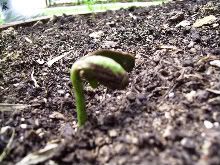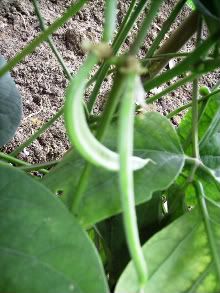Debate on Porcupin - up to its chosen name was very animated! In particular, the observations made were objective and spot on. Answers on its physical and possible behavioural adaptations were relevant:
'When threatened, it will puff out its hairy thorns.' Posted by Nicholas King (6C)
We do know that puffing up makes organisms look larger and less vulnerable.
'The caterpillar has a fake eye on its back - the black dot - to mislead its prey that (the dot) is its eye ...' Posted by Kay Kiat
Question is "Why fake eyes?"
Finally, this comment by Marcus Chionh triggers other thoughts: 'MAYBE they do not have any spikes underside of it because they need to crawl, not curl up'
Many felt though that the absence of spikes underneath may help both actions of crawling and curling up.
We also know from our reading that caterpillars like to crawl underneath leaves as an extra precaution. Where do its usual predators come from? Mull over this as that was part of a PSLE question in 2008.
How To Soar in PSLE - BTPS Way!!
Interact with complex questions / graphs / pictures to pick up valuable clues (don't highlight - just use your pen to underline words or scribble notes)
Start with Booklet A and do it meticulously with full focus - explore all 4 distractors before making final choice.
MANAGE your TIME - to score well, you need to try to finish ALL questions.
Specific answers = answers that are relevant to question.
When confused, choose any of the following strategies:
1. Ask, "What Science idea is being used in question?"
2. Pose other questions to clarify your thoughts
3. COMPARE to another set-up
4. COMPARE to a reverse situation
5. Connect to your knowledge in life (yes, you do have lots of prior / other knowledge)
6. Break down your answer in steps before crafting final answer.
Common problems with wrong answers:
*Answers are generic/vague and do not connect to that specific question
*Answers are not scientific and do not explain using Science ideas
*Answers do not make use of data provided when asked
*Answers did not make comparisons - use words like more/most etc..when asked
BTPS supports all P6 in achieving their PSLE GOALS!!
Start with Booklet A and do it meticulously with full focus - explore all 4 distractors before making final choice.
MANAGE your TIME - to score well, you need to try to finish ALL questions.
Specific answers = answers that are relevant to question.
When confused, choose any of the following strategies:
1. Ask, "What Science idea is being used in question?"
2. Pose other questions to clarify your thoughts
3. COMPARE to another set-up
4. COMPARE to a reverse situation
5. Connect to your knowledge in life (yes, you do have lots of prior / other knowledge)
6. Break down your answer in steps before crafting final answer.
Common problems with wrong answers:
*Answers are generic/vague and do not connect to that specific question
*Answers are not scientific and do not explain using Science ideas
*Answers do not make use of data provided when asked
*Answers did not make comparisons - use words like more/most etc..when asked
BTPS supports all P6 in achieving their PSLE GOALS!!
Subscribe to:
Post Comments (Atom)
Science Around Me (SAM)
SAM is a Science journal that allows pupils to express themselves in their favourite ways about Science.
SAM is another great opportunity for pupils to THINK and TALK Science in a medium that is customised to their learning styles.
SAM allows teachers to informally assess understanding of the child and clarify misconceptions in their learning.
SAM is another great opportunity for pupils to THINK and TALK Science in a medium that is customised to their learning styles.
SAM allows teachers to informally assess understanding of the child and clarify misconceptions in their learning.
Factors Affecting the Environment by Gog Ru Yan - 6G

When Ice Changes into Water by Goh Chee Yan - 5G
Do you wonder whether the mass of ice changes when it melts into water. Try this out:
1. Put a few ice cubes into a plastic bag
2. Tie the mouth of the bag tightly
3. Weigh the bag of ice cubes (if there is condensation outside the bag, wipe it dry before weighing)
4. Place the bag in the sun
5. When ice has melted, wipe the outside of the bag dry (refer to step 3)
6. Weigh the bag
You will discover that the mass of the bag remains the same!
There is no change in mass when ice melts!!
1. Put a few ice cubes into a plastic bag
2. Tie the mouth of the bag tightly
3. Weigh the bag of ice cubes (if there is condensation outside the bag, wipe it dry before weighing)
4. Place the bag in the sun
5. When ice has melted, wipe the outside of the bag dry (refer to step 3)
6. Weigh the bag
You will discover that the mass of the bag remains the same!
There is no change in mass when ice melts!!
Simple Steps to fight Dengue by Elizabeth Wu 4C







1 comment:
They hide in the under side of the leaves(while eating ) so predators would not be able to see it.
The sharp pointed skin helps it to prevent predators.When they are about to eat it,could see its pricks or touch and back off leaving it alone.
Post a Comment